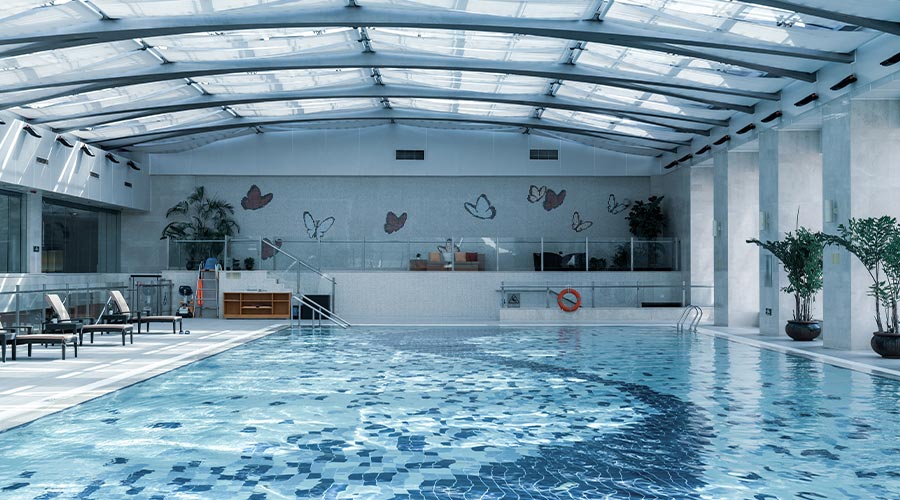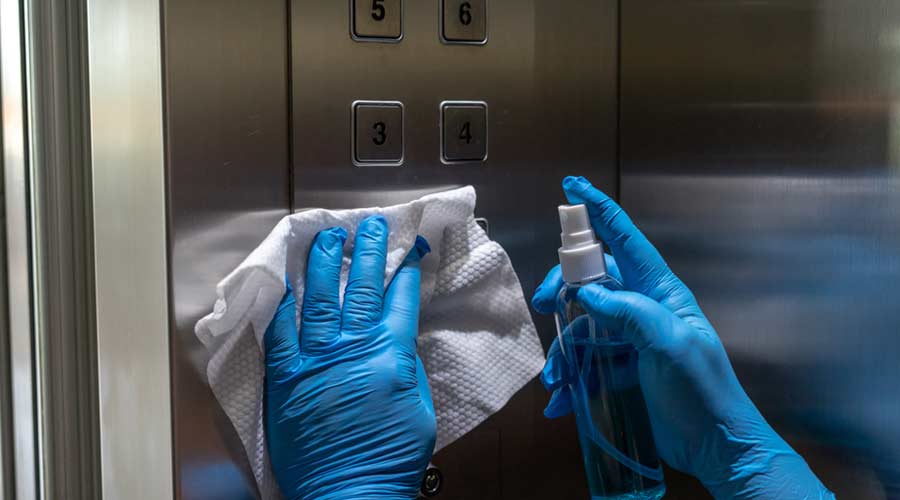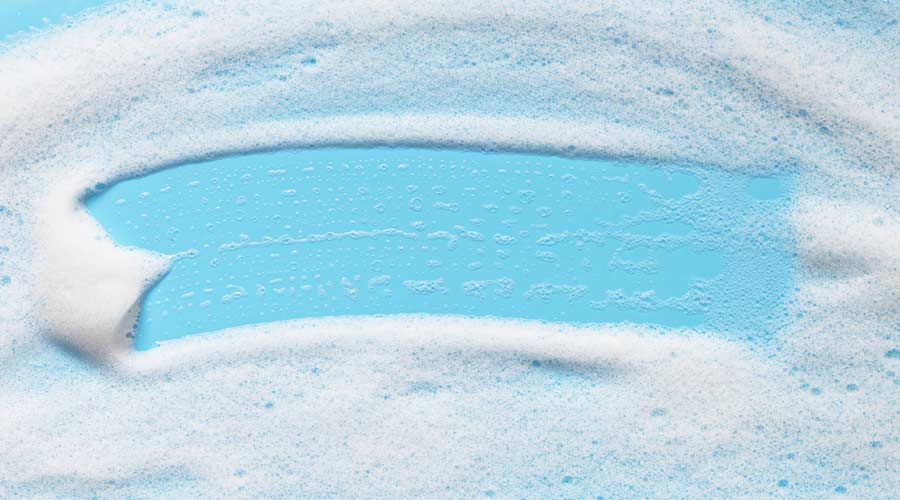
By Austin Gardiner
Indoor pools in commercial facilities — including K-12 schools, colleges and universities, hotels, and hospitals — offer year-round recreation and wellness benefits, but they also present a persistent challenge: maintaining good indoor air quality (IAQ). In educational settings, poor IAQ can impact student health and athletic performance, while hospitals risk compromising patient recovery in therapy pools. Hotels and recreational centers face guest dissatisfaction and potential liability issues if air quality is neglected.
Without proper ventilation, chloramine buildup, excess humidity, and airborne contaminants can create an unhealthy environment for occupants. From respiratory issues to structural damage, poor pool ventilation can have significant consequences. Understanding these risks and implementing a few best practices can help facility managers improve air quality, enhance safety, and reduce long-term maintenance costs.
IAQ Challenges in Pool Areas
Indoor pools produce high levels of moisture and chemical byproducts, particularly chloramines — irritating compounds formed when chlorine reacts with organic matter such as urine and sweat. Without proper ventilation, these chloramines become trapped in the air, leading to strong odors and respiratory discomfort for occupants.
Inadequate air circulation also leads to excessive humidity, which can foster mold growth on ceilings, walls, and ductwork. High humidity levels not only degrade air quality, but also produce an ideal environment for bacteria and fungi, posing additional health risks. If left unaddressed, these IAQ challenges can quickly escalate, affecting the entire facility.
Health and Safety Risks
Poor IAQ in pool areas is more than just an inconvenience — it’s a health hazard. Chloramine exposure can cause eye irritation, skin discomfort, and respiratory issues, particularly for individuals with asthma or other sensitivities. Facility staff, lifeguards, and frequent swimmers are especially vulnerable to prolonged exposure.
Beyond health risks, high humidity can lead to structural damage and safety concerns. Mold and mildew growth compromise building materials, while excess moisture accelerates the corrosion of metal fixtures, ventilation systems, and even electrical components. Additionally, wet surfaces increase the risk of slip-and-fall accidents, which can lead to costly liability claims.
Compliance and Operational Impact
Regulatory bodies such as the Occupational Safety and Health Administration (OSHA) and the American Society of Heating, Refrigerating, and Air-Conditioning Engineers (ASHRAE) set IAQ and ventilation standards that commercial facilities must follow. Failure to meet these standards can lead to fines, operational disruptions, and increased health complaints from staff and guests.
Poor ventilation also drives up maintenance and energy costs. HVAC systems must work harder to compensate for excessive humidity and airborne contaminants, leading to higher energy consumption and frequent repairs. Additionally, facilities with inadequate IAQ may face increased insurance premiums or legal liabilities due to health-related complaints.
Best Practices for IAQ Improvement
To maintain a safe and healthy indoor pool environment, facility managers should prioritize the following best practices:
-Ensure proper ventilation and air exchange: Pool areas require dedicated ventilation systems that provide sufficient air exchange to remove chloramines and control humidity. High-efficiency ventilation systems with dehumidification capabilities can help maintain optimal conditions.
-Maintain HVAC systems and monitor humidity: Regular inspections and maintenance of HVAC systems are essential to ensure they operate efficiently. Installing humidity sensors can help facility managers track moisture levels and adjust ventilation as needed.
-Balance chemical use to reduce chloramine production: Over-chlorination can exacerbate chloramine buildup. Proper water treatment, including the use of secondary disinfection methods like UV or ozone, can help reduce reliance on excessive chlorine.
Create a Healthy and Safe Environment
Poor pool ventilation poses serious risks to indoor air quality, impacting health, safety, and operational efficiency. For facility managers in K-12 schools, colleges, hospitals, and hotels, these challenges are even more pressing. A well-ventilated therapy pool in a hospital ensures patient comfort and safety, while proper IAQ in school and university pools protects young athletes and supports peak performance. Hotels with clean, fresh pool environments enhance guest experiences and protect their reputation.
By taking a proactive approach to ventilation management, facility managers can improve IAQ, extend the lifespan of building materials, and reduce overall maintenance costs. Investing in regular air quality assessments, staff training, and proper HVAC maintenance can make a significant difference in creating a safer and more comfortable environment for everyone.
By addressing these challenges now, commercial facilities — especially those serving students, patients, and guests — can create healthier indoor pool environments and avoid costly complications down the line.
Austin Gardiner co-founded GL Pools in 2006, bringing a deep-seated commitment to excellence in the pool service industry alongside childhood friend Kyle Lobe. With an NPC Startup certification and having formerly served as the President of his local IPSSA chapter, Austin's expertise ensures GL Pools upholds the highest standards of service and professionalism. His passion and dedication have been instrumental in establishing GL Pools as a distinguished name in the competitive pool filter cleaning service market.
posted on 2/24/2025

 The Down and Dirty on Cleaning in Virus Season
The Down and Dirty on Cleaning in Virus Season How Surfactant Use is Expanding in Commercial Cleaning
How Surfactant Use is Expanding in Commercial Cleaning Maximize Your Margins: Learn How to Automate Pricing and Track Rebates
Maximize Your Margins: Learn How to Automate Pricing and Track Rebates